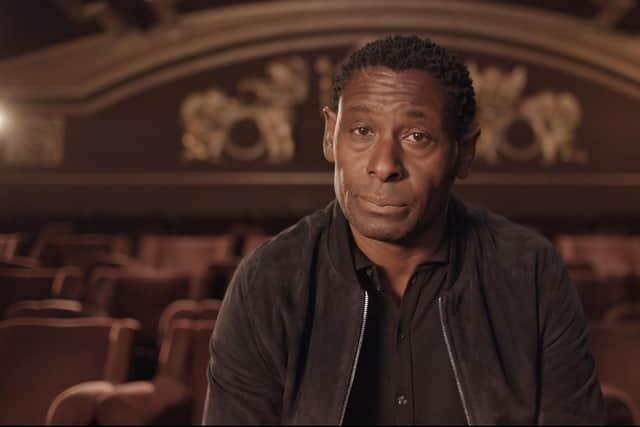David Harewood on Blackface explores the history of minstrelsy
and live on Freeview channel 276
The Homeland star David Harewood’s ancestors were slaves owned by the Harewood family; now, thanks to a dialogue with the present Earl of Harewood, his portrait hangs in the family’s ancestral home – Harewood House near Leeds.
When it comes to issues of race, the actor is not one to shy away from difficult conversations, and often he is apt to ensuring a positive outcome stems from these discussions. His recent series Get on Up: The Triumph of Black America was a celebration of the creativity and inspiration of the heroes he had while growing up. Meanwhile, his documentary 1000 Years A Slave highlighted a lack of representation of Black history in places such as Harewood House, and sought to remedy this in as positive a way as possible.
Advertisement
Hide AdAdvertisement
Hide AdThis new hour-long film, made by historian David Olusoga’s indie production company Uplands Television, also charts the history of Black entertainment, albeit in a rather less celebratory tone than Get on Up.


Blackface, as the title suggests, explores the history of minstrelsy, from its origins in early 19th-century America, and how it crossed the Atlantic to Britain, through to more regrettably recent examples.
Following the rise to prominence of the Black Lives Matter movement in 2020, sparked by the murder by police of George Floyd, society collectively reassessed a lot of its shortcomings, including the use of blackface in light entertainment.
Ant and Dec issued an apology for playing two Jamaican women for a prank segment on Saturday Night Takeaway, while US comedian Jimmy Fallon said he was sorry for using blackface in an impression of fellow comic Chris Rock.
Advertisement
Hide AdAdvertisement
Hide AdMeanwhile, the BBC and Netflix both removed episodes of Little Britain from their libraries due to the fact that Matt Lucas and David Walliams’ sketch show featured blackface in a number of its sketches. Other shows caught up in the scandal included Chris Lilley’s Angry Boys and Summer Heights High.
The problem with blackface is that, historically, it was used as a delivery system for racist tropes. Due to its immense popularity in Victorian Britain, it actually shaped the ways in which Blackness was perceived – attitudes which may have lasted generations.
Such was the long-term popularity of the medium, the touring stage version of the BBC’s long-running Black and White Minstrel Show was in fact among the first jobs Lenny Henry was signed up for by his then-manager after he initially found fame as a stand-up comedian and impressionist on the New Faces talent show in 1975.
Henry has since spoken about the profound toll this period of his life took on him.
Advertisement
Hide AdAdvertisement
Hide AdBut how did it spread from its birthplace in the USA to these shores, and beyond – and why deemed to be acceptable for so long?
In this film, Harewood will seek to understand how minstrelsy as entertainment managed to ingrain harmful stereotypes in popular culture, and investigates its endurance – after all, it’s only relatively recently that it’s finally been regarded as being harmful and wrong.